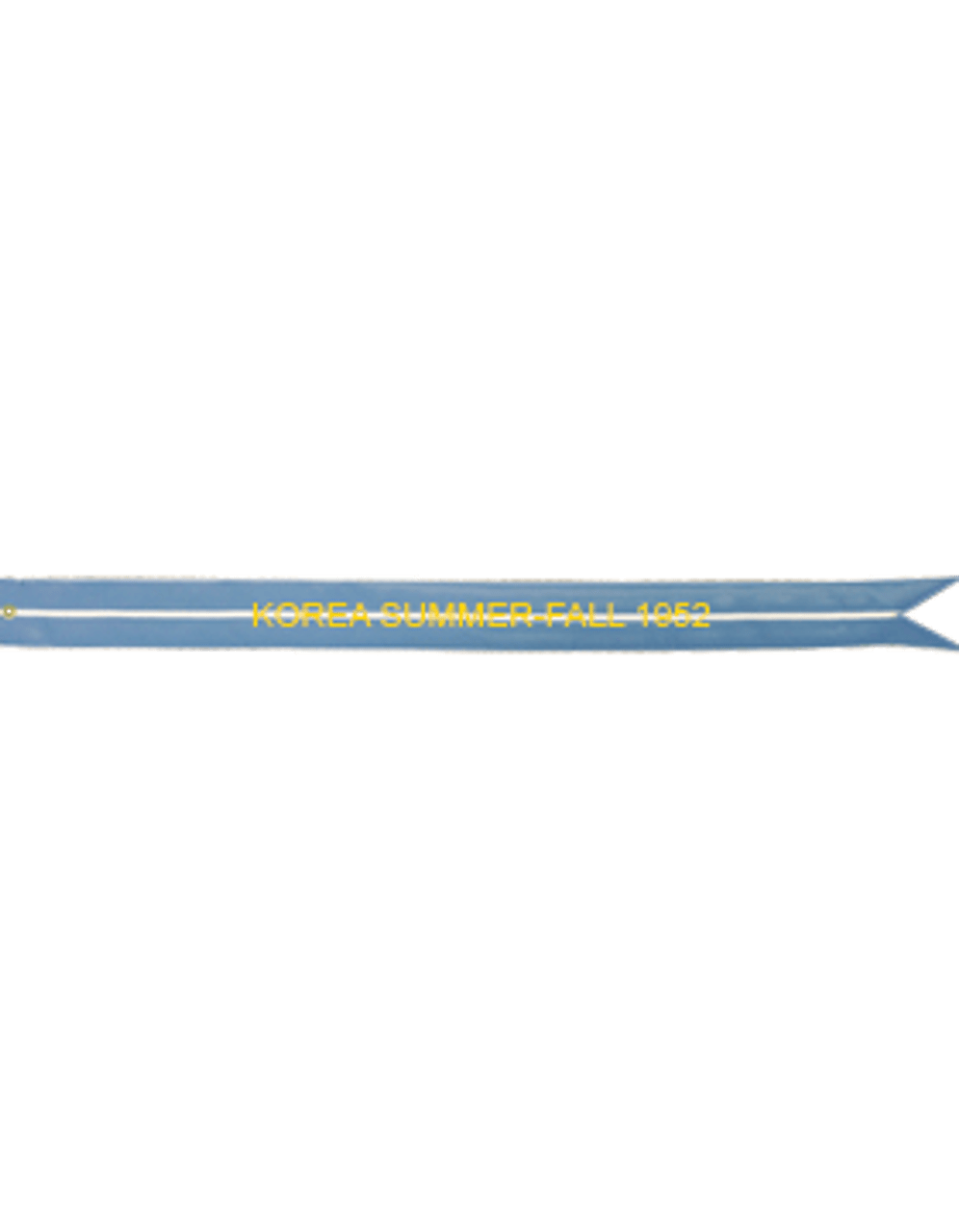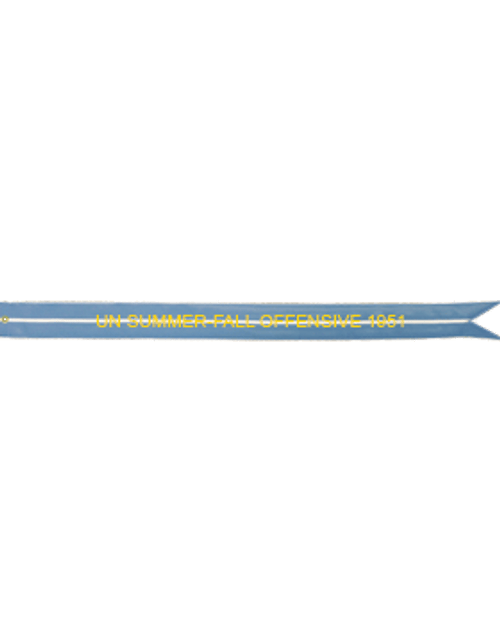Product Description
Introducing the US Air Force Battle Streamer for the Korean Service Campaign, proudly bearing the inscription SECOND KOREAN WINTER 1951-1952. This distinguished streamer stands as a testament to the unwavering courage, sacrifice, and resilience displayed by the United States Air Force during this pivotal chapter in history. Whether you are a dedicated aviation enthusiast, a military veteran, or a proud American, this Battle Streamer is an essential addition to your collection. Available in three lengths – 2 foot, 3 foot, and 4 foot – our US Air Force Battle Streamer is a versatile and meaningful way to commemorate the heroic endeavors of the Korean Service. Here's why you'll want to make this piece a part of your memorabilia:
Key Features:
- Premium Quality: Meticulously crafted with precision and attention to detail, our Battle Streamer is composed of durable, high-quality materials that ensure a lasting display, preserving the historical significance of the Korean Service.
- Three Length Options: Choose from three convenient lengths – 2 foot, 3 foot, and 4 foot – allowing you to tailor your display to fit your space, whether it be at home, in the office, or as part of a comprehensive military collection.
- Easy Display: Equipped with brass grommets, each streamer is designed for effortless hanging on walls, flagpoles, or within shadow boxes. It provides a hassle-free and distinguished presentation.
- Versatile Decor: The Battle Streamer is a versatile addition to various settings, from military ceremonies and historical reenactments to classrooms and museums. It serves as a powerful conversation starter, offering insights into the pivotal role played by the Air Force in the Korean Service.
- Educational Value: Utilize this Battle Streamer as a valuable teaching tool, engaging students, family members, and friends in discussions about the significance of the Korean Service.
- Thoughtful Gift: Share the legacy of the Air Force's heroic contributions with loved ones. This Battle Streamer makes a meaningful gift for veterans, history enthusiasts, and anyone who appreciates the rich tapestry of American military history.
History of the SECOND KOREAN WINTER 1951-1952 Battle Streamer
In 1951, the United States Air Force (USAF) recognized the need for more F-86s to counter the Chinese Air Force in Korea. The 51st Fighter-Interceptor Wing at Suwon Airfield received F-86s, replacing its F-80s. In December 1951, the wing conducted successful combat missions with the new Sabrejets, downing 26 MiGs while losing only 6 F-86s. Despite increasing vulnerability to flak damage, the Fifth Air Force continued raids against railways, joined by B-29s in January 1952. The interdiction campaign damaged enemy railways, diverting resources from the front lines. As the ground thawed, the campaign continued through April, seeking more effective means to block North Korean transport systems. Close air support declined with static battle lines in 1951-1952, leading to alternating aerial bombardment and artillery attacks. Peace talks stalemated, prompting UN air commanders to prepare a new strategy of military pressure by attacking previously exempted or underexploited targets on April 30.











